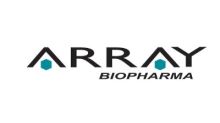
Array BioPharma has announced the submission of two New Drug Applications (NDAs) to the US Food and Drug Administration (FDA) to support use of the combination of binimetinib 45 mg twice daily and encorafenib 450 mg once daily (COMBO450) for the treatment of patients with BRAF-mutant advanced, unresectable or metastatic melanoma. The submissions are supported by data from the pivotal phase 3 COLUMBUS study, which showed that patients who received binimetinib and encorafenib had a significantly longer progression free survival (PFS) compared to patients receiving vemurafenib.
"The totality of the COLUMBUS results, including estimated progression free survival, objective response rate, dose intensity and tolerability of the combination, provide a strong and consistent theme across multiple endpoints for this study," said Ron Squarer, chief executive officer, Array BioPharma. "We look forward to working with the FDA as they review the NDA and, if approved, hope the combination of binimetinib and encorafenib will become a new option for patients with BRAF-mutant advanced melanoma."
As presented at the 2016 Society for Melanoma Research Annual Congress, results from Part 1 of the COLUMBUS study showed that COMBO450 significantly extend PFS in patients with advanced BRAF-mutant melanoma, with a PFS of 14.9 months compared with 7.3 months observed with vemurafenib [hazard ratio (HR) 0.54, (95% CI 0.41-0.71, P<0.001)]. As part of the trial design, the primary analysis was based on a Blinded Independent Central Review (BICR) of patient scans, while results by local review at the investigative site were also analyzed.
In this study, COMBO450 was generally well-tolerated, with a median duration of treatment of 51 weeks and median relative dose intensity for encorafenib and binimetinib of 100% and 99.6%, respectively. Grade 3/4 adverse events (AEs) that occurred in more than 5% of patients receiving COMBO450 were increased blood creatine phosphokinase (CK) (9%), increased gamma-glutamyltransferase (GGT) (7%) and hypertension (6%). The incidence of any grade of AEs of special interest, defined based on toxicities commonly associated with commercially available MEK+BRAF-inhibitor treatments for patients receiving COMBO450 included: rash (23%), pyrexia (18%), retinal pigment epithelial detachment (13%) and photosensitivity (5%). Full safety results of COLUMBUS Part 1 were presented at the 2016 Society for Melanoma Research Annual Congress.
COLUMBUS Part 2 was designed specifically to assess the contribution of binimetinib to the combination of binimetinib and encorafenib by reducing the dose of encorafenib to 300mg in the combination arm to allow for a comparison of equal doses across arms. In COLUMBUS Part 2, the primary analysis compared PFS in patients treated with binimetinib 45mg twice daily plus encorafenib 300mg daily (COMBO300) to patients treated with encorafenib 300mg daily as a single agent. Top-line results showed the mPFS for patients treated with COMBO300 was 12.9 months compared to 9.2 months for patients treated with single agent encorafenib, with HR of 0.77 [95% CI 0.61-0.97, p=0.029]. COMBO300 was generally well-tolerated and reported dose intensity and AEs were consistent with COMBO450 results in COLUMBUS Part 1. Further results from COLUMBUS Part 2 will be presented at a medical meeting during the second half of 2017.
The COLUMBUS trial, (NCT01909453), is a two-part, international, randomized, open label Phase 3 study evaluating the efficacy and safety of the combination of binimetinib plus encorafenib to vemurafenib and encorafenib monotherapy in 921 patients with locally advanced, unresectable or metastatic melanoma with BRAF V600 mutation. Prior immunotherapy treatment was allowed. Over 200 sites across North America, Europe, South America, Africa, Asia and Australia participated in the study. Patients were randomized into two parts:
In Part 1, 577 patients were randomized 1:1:1 to receive 45mg binimetinib plus 450mg encorafenib (COMBO450), 300mg encorafenib alone, or 960mg vemurafenib alone. The dose of encorafenib in the combination arm is 50% higher than the single agent maximum tolerated dose of 300mg. A higher dose of encorafenib was possible due to improved tolerability when combined with binimetinib. The primary endpoint for the COLUMBUS trial was a PFS comparison of COMBO450 versus vemurafenib. PFS is determined based on tumor assessment (RECIST version 1.1 criteria) by a Blinded Independent Central Review (BICR). Secondary endpoints include a comparison of the PFS of encorafenib monotherapy to that of COMBO450 and a comparison of overall survival (OS) for COMBO450 to that of vemurafenib alone.
In Part 2, 344 patients were randomized 3:1 to receive 45mg binimetinib plus 300mg encorafenib or 300mg encorafenib alone. Part 2 is designed to provide additional data to help evaluate the contribution of binimetinib to the combination of binimetinib and encorafenib. As the comparison of COMBO450 to encorafenib in Part 1 did not achieve statistical significance, analyses of other endpoints including the statistical analysis conducted in Part 2 is descriptive.
Array biopharma, us fda approval, binimetinib, encorafenib, treat advanced melanoma